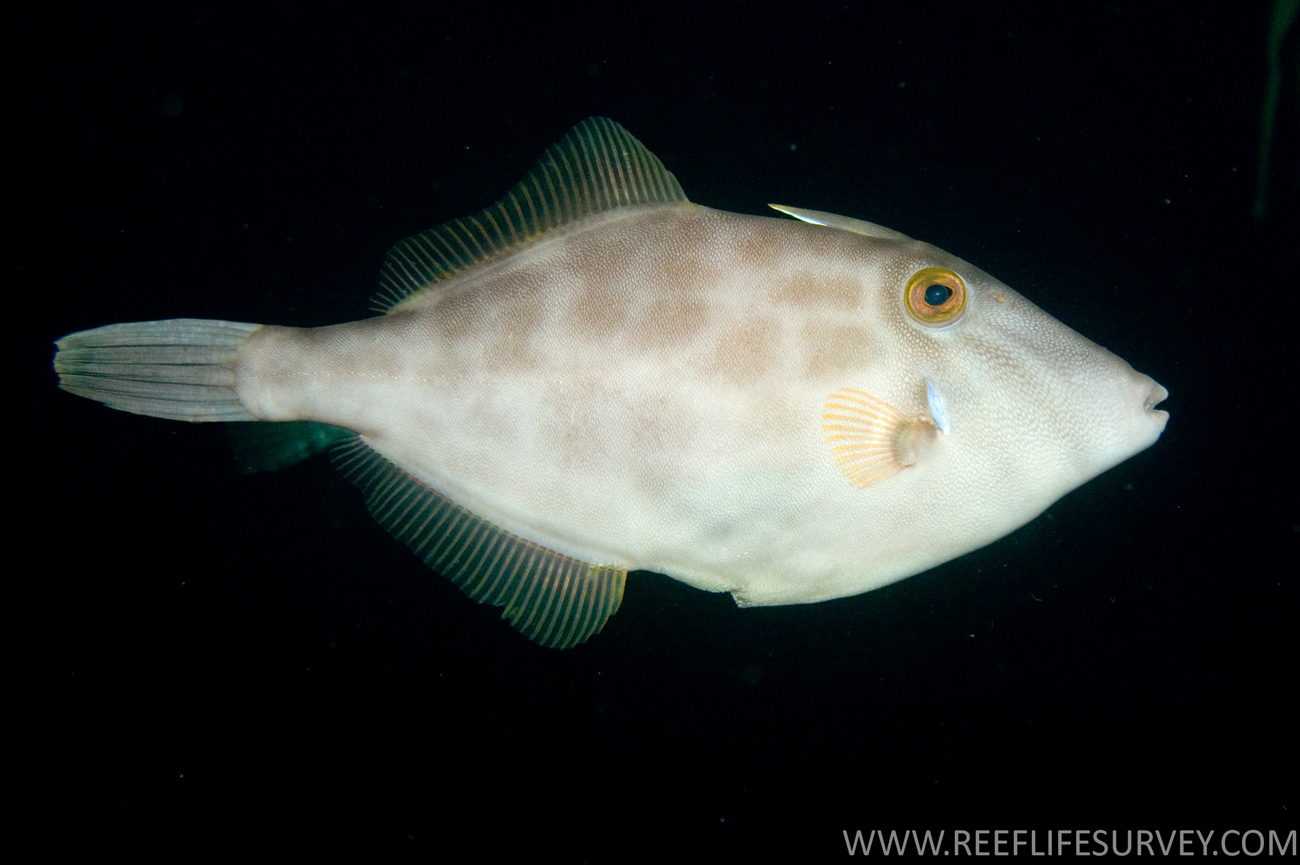Velvet Leatherjacket, Meuschenia scaber (Forster 1801)

A Velvet Leatherjacket, Meuschenia scaber, at the Poor Knights Marine Reserve, New Zealand. Source: Andrew J. Green / Reef Life Survey. License: CC BY Attribution
A pale brown, greyish, or whitish leatherjacket, usually with large dark blotches, and 2-3 dark diagonal bars radiating forward from the eye to the underside of the head. Males have a narrow blackish submarginal bar on the tail.
The common name Velvet Leatherjacket refers to the scales which have many tiny spinules, giving this species a velvety appearance.
Velvet Leatherjacket, Meuschenia scaber (Forster 1801)
More Info
|
Distribution |
Southern half of Australia, from Sydney, New South Wales, to Cape Naturaliste, Western Australia, and around Tasmania; also at Lord Howe Island and Norfolk Island in the Tasman Sea. Elsewhere the species occurs in the temperate, south-west Pacific (New Zealand including Chatham Islands and Kermadec Islands). Although Velvet Leatherjackets usually inhabit deeper macroalgal-covered reefs, they occasionally enter bays and estuaries, especially as juveniles. Individuals are also seen on shallow coastal reefs; depth range 2-200 m. |
|
Features |
Dorsal fin spines/rays II, 28-32; Anal fin rays 31-36; Caudal fin rays 12; Pectoral fin rays 12-14; Vertebrae 20. |
|
Size |
To 32 cm |
|
Colour |
Pale brown, greyish, or white, usually with large dark blotches, and 2-3 dark bars from eye to underside of head; tail of male with a thin blackish cross-bar near hind margin. |
|
Feeding |
Feeds on benthic invertebrates, and has also been observed feeding on zooplankton above the bottom. |
|
Fisheries |
Often taken as by-catch in trawls, especially in the inshore bottom trawl fishery in New Zealand. |
|
Remarks |
Velvet Leatherjackets may be aggressive, and are known to bite divers' fingers. |
|
Etymology |
The specific name is from the Latin scaber (= rough), presumably in reference to the rough texture of the skin of this species. |
|
Species Citation |
Balistes scaber Forster in Bloch & Schneider 1801, Systema Ichthyologiae : 477. Type locality: Pacific Ocean (= Queen Charlotte Sound, New Zealand). |
|
Author |
Bray, D.J. 2019 |
|
Resources |











